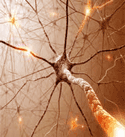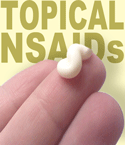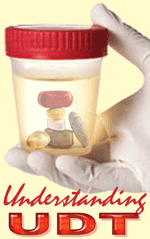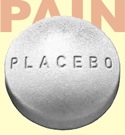Thursday, November 1, 2012
CAM for Headache & Migraine Reviewed

Diverse practices of complementary and alternative medicine (CAM) are increasingly becoming mainstream approaches for treating various pain conditions. A team of Australian researchers recently reported the first systematic review examining CAM use specifically for headache and migraine. Overall, CAM use was somewhat prevalent while satisfaction with and effectiveness of these therapies were generally moderate; however, there also were many limitations of the evidence available for analysis.
Writing in an early online edition of the journal Headache, from the American Headache Society, Jon Adams, PhD and colleagues report results of a comprehensive search of the literature from 2000 to 2011 in the CINAHL, MEDLINE, AMED, and Health Sources databases [Adams et al. 2012]. Their search was confined to peer-reviewed research-based articles published in English and reporting findings of CAM use among persons with primary headache or migraine. Individual cases reports were excluded, as were clinical trials of CAM since efficacy analyses for individual therapies were not a part of this review.
Saturday, October 27, 2012
Neuropathic Pain Relieved By Immunoglobulin

Neuropathic pain conditions are clinically challenging for practitioners and patients. Pharmacotherapies may help to reduce pain intensity in some patients, but this relief can be insufficient for many and nonexistent in others. A newly-reported study found remarkably favorable results for intravenous immunoglobulin as an adjunct to standard therapies for neuropathic pain; however, small trials demonstrating large clinical effect sizes need to be considered very cautiously.
Severe pain is associated with many peripheral nervous system diseases and its successful treatment is an area of unmet need and ongoing research. Stefano Jann, MD — Department of Neurology, Niguarda Hospital, Milan, Italy — and colleagues conducted an open-label pilot study to assess the potential benefits of adjunctive intravenous immunoglobulin (IVIg) in patients with painful polyneuropathy that was resistant to conventional therapies [Jann et al. 2012].
Friday, October 26, 2012
Steroid Injections Boost Risk of Spine Fractures

Concerns about the safety of epidural steroid injections skyrocketed recently in the United States due to a multistate fungal meningitis outbreak and numerous deaths among patients injected with contaminated solution from a single pharmacy in New England. Now comes news that persons treated with epidural steroid injections for back pain relief are at increased risk of spinal bone fractures, according to research funded by Henry Ford Health System in Detroit, Michigan.
In a presentation on October 25, 2012 at the annual meeting of the North American Spine Society, researchers described a retrospective study comparing data on 6,000 patients treated for back pain between 2007 and 2010; 3,000 patients received at least one lumbar epidural steroid injection and 3,000 did not receive injection [Mandel and Schilling 2012]. The average age of patients was 66 years and 64% were women.
Friday, October 19, 2012
The Profusion of Fibromyalgia Therapies Studied

Fibromyalgia syndrome (FMS) can be a difficult condition to characterize and treat, and only relatively recently have specific medications received regulatory approval for FMS. A new study provides a snapshot of the profusion of medications and nonpharmacologic therapies that patients with FMS typically receive in everyday practice; however, many of the 182 prescription medications and 17 nonpharmacologic treatments were not being used in accordance with best supporting research evidence.
In this study — appearing in the October 2012 issue of Pain Medicine — a team of researchers investigated the burden of illness and treatment patterns in 1,700 patients with fibromyalgia syndrome (FMS) [Robinson et al. 2012]. They also examined patient, physician, and care factors associated with the treatment choices of individuals receiving new prescriptions for FMS.
Thursday, October 18, 2012
Long-Term Intrathecal Opioids Aid Chronic Pain

There has been considerable debate over benefits of the long-term administration of opioid analgesics for chronic pain, with some saying opioids are unhelpful or even harmful due to the development of tolerance, side effects, or paradoxically increased pain. New evidence suggests that intrathecal opioid administration, at low dose, not only ameliorates chronic, severe pain consistently over several years, but increases functionality, without side effects, and dramatically minimizes the need for oral opioids.
Friday, October 12, 2012
Opioid Poisoning Risk Less Than For Other Drugs

With pharmaceuticals becoming increasingly accessible, poisoning and overdose have become rising concerns in the United States and throughout the world, particularly involving opioid analgesics. Now, a newly published study from the University of Rochester Medical Center reports that nonopioid analgesics and psychotropic agents are more likely to be associated with drug poisoning overdose than opioid analgesics [Wiegand et al. 2012].
Writing in an early online edition of the Journal of Medical Toxicology, the researchers examined data from 2011 in the 2nd annual report of the Toxicology Investigators Consortium, or ToxIC. This group — created by the American College of Medical Toxicology — has developed a real-time surveillance system for determining trends among all cases evaluated by medical toxicologists. The 2011 database included 10,392 cases from 28 sites encompassing 49 specific institutions; 53% of the included patients had been sent to emergency departments.
Thursday, October 11, 2012
Topical NSAIDs for Chronic Musculoskeletal Pain?

According to a recently reported Cochrane systematic review and meta-analysis, topically applied nonsteroidal anti-inflammatory drugs (NSAIDs) provide relief of chronic osteoarthritis pain in the knee or hand that is comparable to oral NSAID formulations and significantly better than placebo. However, there was no evidence for topical NSAIDs benefitting any other chronic pain conditions and the availability of high quality research data overall was limited; adequate data could be found only for topical diclofenac.
For this study, Sheena Derry, PhD, from the University of Oxford in the United Kingdom and colleagues searched the literature on the use of topical NSAIDs in chronic musculoskeletal pain [Derry et al. 2012]. They selected only a) randomized, double blind trials with placebo or active comparators, b) which included at least 10 participants in each treatment arm, c) were of high methodological quality, and d) had a duration of at least 2 weeks. All NSAID agents in any topical formulation (eg, solutions, cream, gel, patch) were eligible, with the exception of salicylates (eg, aspirin), which the researchers note are “no longer classified as topical NSAIDs.”
Monday, October 8, 2012
Why Use UDT in Pain Management?

Part 2: An Underused Tool for Improved Patient Care
By Stewart B. Leavitt, MA, PhD and Gary M. Reisfield, MD
Much has been written about the utility of urine drug testing, or UDT, in improving care in pain management, but its use remains surprisingly low. This is particularly true in primary care settings, where physicians, nurse practitioners, physician assistants, and clinical pharmacists treat the majority of chronic pain in the United States.
In Part 1 of this series on “Understanding UDT in Pain Care” [here], we noted that clinical drug testing— as one component of ongoing opioid analgesic therapy — is a critical aspect of pharmacovigilance for assuring effective, safe pain management. We also described the many consensus guidelines and expert recommendations advocating UDT as an emerging standard of care in this context.
Yet, UDT appears to be a widely underused clinical tool, and in this article we examine research describing the extent of this problem and some of the barriers that have hindered the widespread application of UDT in pain care settings. Finally, we examine the rationales for UDT, as expressed by experts in the field.
Thursday, October 4, 2012
New Research on Vitamin D, Pain, & Mortality

Benefits of Vitamin D continue to be featured in the news and medical journals. Some of the latest reports suggest that if you have a loved one who is afflicted with painful rheumatoid arthritis or multiple sclerosis, or is elderly and frail, make sure they get plenty of vitamin D — they may have less pain or disability and live longer as a result. Here is a roundup of the research.
Vitamin D Reduces RA Risk
Writing in an early online edition of Clinical Rheumatology, researchers report a systematic review and meta-analysis examining the association between vitamin D intake and the development of rheumatoid arthritis (RA) and between serum vitamin D levels and RA severity [Song et al. 2012]. Their literature search revealed 3 cohort studies including 215,757 participants and 874 incident (ie, newly developed) cases of RA, as well as 8 studies on the association between serum vitamin D levels and RA activity involving 2,885 RA patients and 1,084 controls.
Wednesday, October 3, 2012
Oct 2012 – Pain Product Announcements & Warnings

Featured Items: adalimumab (Humira) approved for ulcerative colitis; buprenorphine/naloxone tablet (Suboxone) production halted; topical OTC analgesics product safety alert; 2 lots of hydrocodone-acetaminophen combination tablets recalled. — All brand names are trademarks of their respective manufacturers. Compiled by Winnie Dawson, MA, RN, BSN.
Adalimumab (Humira®) – Expanded FDA Approval for Moderate to Severe Ulcerative Colitis
Abbott Laboratories announced a September 2012 U.S. Food and Drug Administration approval of Humira for adult treatment of moderate to severe ulcerative colitis (UC) in patients who were unresponsive to immunosuppressive drugs or corticosteroid therapy. Patients with UC who show evidence of clinical remission at treatment week 8 are considered good candidates for continued Humira therapy. The additional approval was based on the positive results from 2 clinical trials in more than 900 patients with ulcerative colitis. Both studies reported nearly twice the number of clinical remissions in treated participants compared with subjects in placebo groups.
Friday, September 28, 2012
Unconscious Mind Guides Placebo Response to Pain

Concepts of placebo, dating back to medieval times, are becoming increasingly important today for understanding the efficacy and limitations of pain management therapies. For example, we most recently discussed in Pain-Topics UPDATES major influences of placebo effects in acupuncture [here] and transcutaneous electrical nerve stimulation (TENS) [here] as therapies for pain. With the newly reported discovery that the unconscious mind may play a key role in placebo effects, researchers have proposed a novel mechanism that helps to further explain the power of placebos and their sinister sister, nocebo.
Writing online in the Proceedings of the National Academy of Sciences (PNAS), Karin Jensen, PhD — of Massachusetts General Hospital and the Program in Placebo Studies at Beth Israel Deaconess Medical Center/Harvard Medical School — and colleagues report a novel study that demonstrated how placebo and nocebo (negative placebo) effects may rely on brain mechanisms that are not dependent on conscious awareness [Jensen et al. 2012]. They enrolled a total of 40 healthy volunteers (24 female, 16 male; median age 23) in 2 experiments:
Thursday, September 27, 2012
Manipulative Therapy for Acute Low-Back Pain?

Spinal manipulative therapy (SMT) or “adjustment” is a widely practiced intervention by chiropractors, osteopaths, and physiotherapists for acute and chronic low-back pain. An updated review of the research on SMT for short-term or acute low-back pain suggests it is no more effective than other therapy options. However, as much as anything, the indecisive research outcomes attest to the lack of high quality evidence in this area of pain management.
As an update to their earlier Cochrane Systematic Review and Meta-Analysis of this topic, Sidney M Rubinstein, DC, MSc and colleagues in The Netherlands conducted an extensive search of all literature on the effects of SMT for acute low-back pain [Rubinstein et al. 2012]. Acute low-back pain was defined a <6 weeks duration, and excluded pain caused by a known underlying condition, such as infection, tumor, or fracture. Patients whose pain was predominantly in the lower back but may also have radiated into the buttocks and legs were included.
